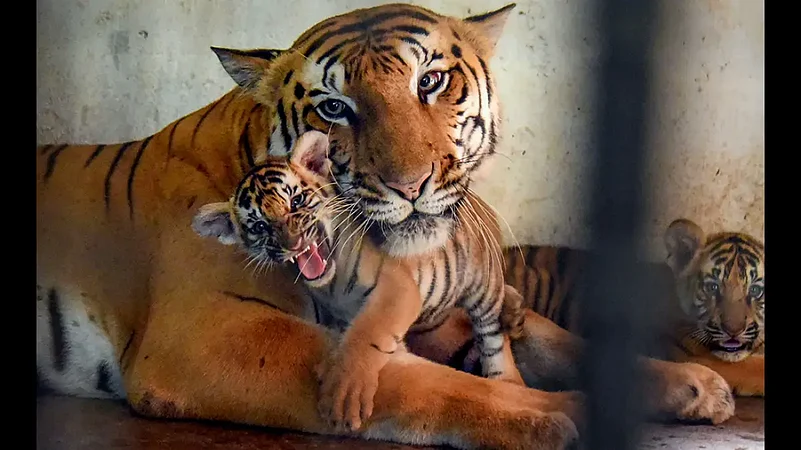India is considering sending tigers to Cambodia to help it reintroduce the big cat to its forests, officials said on Friday. New Delhi signed a pact with Phnom Penh for the world's first transnational tiger reintroduction programme last year, they said.
According to the World Wildlife Fund (WWF), conservationists in Cambodia declared tigers "functionally extinct" in 2016. Cambodia's last tiger was seen on a camera trap in the eastern province of Mondulkiri in 2007.
In September 2017, the Cambodian government announced plans to reintroduce tigers in the country with the help of the WWF. "Recently, India signed an MoU (Memorandum of Understanding) with Cambodia, which is seeking our support for tiger reintroduction. The country has lost all its tigers due to poaching, habitat loss and other issues.
Advertisement
"A delegation from Cambodia has already been to India. Our delegation also went there. Discussions are underway on how we can support them," said SP Yadav, member secretary of the National Tiger Conservation Authority.
The official said India would ensure that Cambodia meets all the requirements before providing tigers to the country. "We must find out the cause of tiger disappearance there and ensure that all factors responsible for it such as prey base, poaching, patrolling, infrastructure... are taken care of.
"If Cambodia meets all the requirements, we have already provided a checklist, then only we will go ahead," he said. Yadav said the two countries would follow all protocols of the International Union for Conservation of Nature for the tiger reintroduction programme.
Advertisement
India launched Project Tiger on April 1, 1973, to promote tiger conservation. Initially, it covered nine tiger reserves spread over 18,278 sq km. At present, India has 53 tiger reserves covering more than 75,000 sq km (approximately 2.4 per cent of the country's geographical area).
With a population of about 3,000 tigers, India is home to more than 70 per cent of the global wild tiger population and their number is increasing at six per cent per annum. Countries with tiger populations -- India, Bangladesh, Bhutan, China, Cambodia, Indonesia, Laos, Malaysia, Myanmar, Nepal, Russia, Thailand and Vietnam -- in 2010 committed to doubling their number of big cats by 2022. India met its target in 2018, four years ahead of schedule.




















